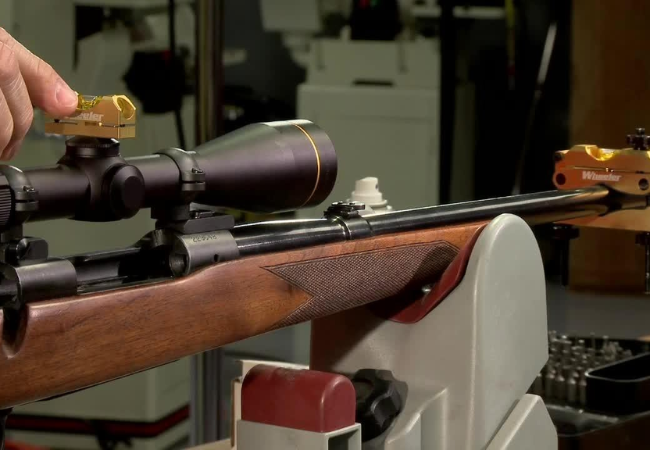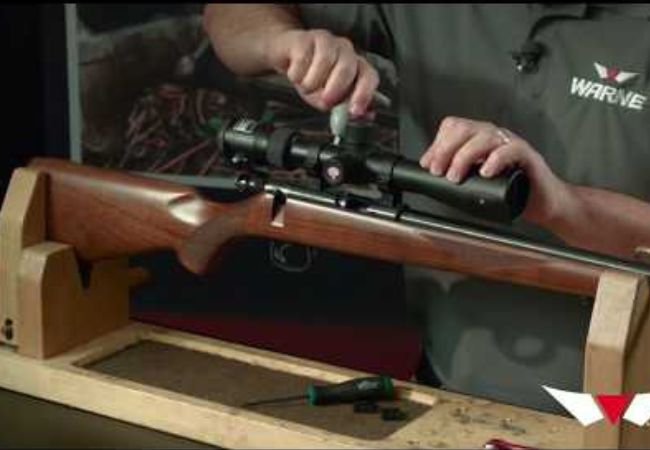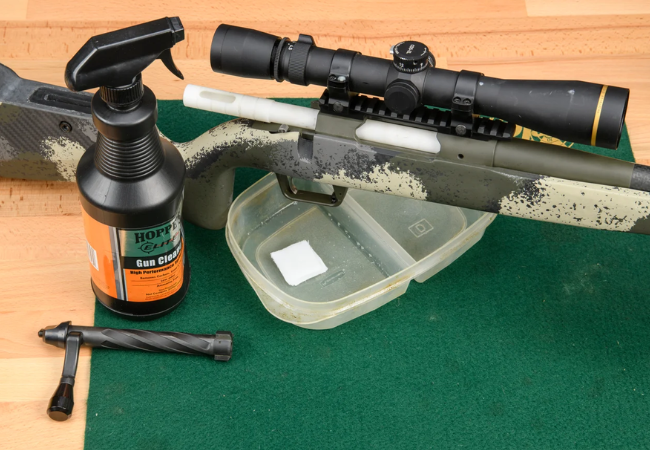When it comes to maintaining and preserving the quality of your firearm accessories, one aspect that often requires attention is the painted rifle scope. The combination of paint and precision optics calls for a delicate touch when it comes to removal.
Whether you’re looking to refresh the appearance of your scope or you have a specific upgrade in mind, understanding the proper methods for removing paint from rifle scopes is essential.

In this article, we’ll provide you with the step-by-step process of safely and effectively removing paint from your rifle scope while ensuring that the optical integrity remains uncompromised.
By following these guidelines, you’ll be equipped with the knowledge to enhance the aesthetics of your rifle scope without compromising its functionality.
Materials and Tools You’ll Need
Before embarking on the paint removal journey, it’s essential to gather the necessary materials and tools. You’ll need:
- Protective Gear: Safety goggles, gloves, and a mask (For sports use high-performance woobie hoodie) to shield yourself from chemicals, dust, and debris.
- Chemical Paint Remover: Opt for a paint remover suitable for firearm accessories, preferably with low toxicity and fumes.
- Fine Sandpaper or Abrasive Pads: Used for sanding off the paint if you choose the abrasive method.
- Heat Gun: For the heat treatment method, choose a heat gun with adjustable temperature settings.
- Clean Cloths and Brushes: To wipe and clean the scope during and after the process.
- Solvent or Alcohol: For final cleaning and residue removal.
- Tape and Plastic Sheets: To protect the lens and sensitive areas from accidental contact.
Methods for Paint Removal
Method 1: Chemical Paint Removers
Chemical paint removers are effective in dissolving paint layers without damaging the underlying material. Follow these steps:

- Prepare the Scope: Dismount the scope from the rifle and ensure it’s clean and free from dust.
- Apply the Remover: Wear protective gear and apply the paint remover using a brush or cloth. Let it sit for the recommended time.
- Scrape Off the Paint: Gently scrape off the softened paint using a plastic scraper or brush. Be cautious near delicate parts.
- Repeat if Necessary: Depending on the number of paint layers, you might need to repeat the process.
Method 2: Sanding or Abrasion
Abrasive methods involve physically sanding off the paint layer. This method requires precision to avoid damaging the scope:
- Secure the Scope: Ensure the scope is securely held in place.
- Begin Sanding: Using fine sandpaper or abrasive pads, start sanding the painted surface gently. Keep the pressure even.
- Frequent Inspection: Periodically check the progress to avoid over-sanding or damaging the scope.
- Clean and Repeat: Wipe off the dust and paint residue. Repeat the process if needed until the paint is removed.
Method 3: Heat Treatment
Heat treatment softens the paint, making it easier to remove without aggressive scraping:
- Adjust the Heat Gun: Set the heat gun to a low temperature initially and gradually increase if necessary.
- Heat the Surface: Gently heat the painted areas in a sweeping motion. Keep the gun moving to avoid overheating.
- Scrape Off the Paint: As the paint softens, use a plastic scraper to gently remove it. Avoid excessive pressure.
- Clean Up: Wipe the scope clean and remove any remaining residue.
Step-by-Step Paint Removal Process
- Disassembly and Safety: Start by disassembling the scope from the firearm. Wear protective gear to ensure your safety throughout the process.
- Cleaning the Surface: Use a clean cloth to wipe the scope’s surface and remove any loose dirt or debris.
- Choosing the Method: Decide on the paint removal method based on your comfort level and available tools.
- Executing the Chosen Method: Follow the detailed steps for the chosen method from above.
- Residue Removal: After removing the paint, use a solvent or alcohol-soaked cloth to clean the scope’s surface thoroughly.
- Lens Protection: Use tape and plastic sheets to cover the lens and delicate parts while working on the scope.

Dealing with Residue and Stubborn Areas
While removing the main paint layer, some residue might remain. To deal with this:
- Solvent Application: Dampen a cloth with solvent or alcohol and gently rub the residue. Avoid excessive pressure.
- Fine Sanding: If needed, perform light sanding on the stubborn residue. Use fine sandpaper to prevent scratches.
Cleaning and Maintenance After Paint Removal
- Final Cleaning: Wipe the scope’s surface with a clean, damp cloth to remove any remaining residue from the removal process.
- Lens Cleaning: Use a lens cleaner designed for optics to clean the lens. Be gentle to avoid scratching.
- Protective Coating: Consider applying a thin protective coating to prevent future paint wear and enhance durability.
Considerations for Re-painting or Refinishing
- Surface Preparation: If you plan to repaint the scope, ensure the surface is clean and free from any residue.
- Refinishing Techniques: Research proper refinishing techniques to ensure the new paint adheres well and doesn’t affect optics.
Conclusion
Removing paint from painted rifle scopes is a meticulous process that requires careful execution. By following the methods outlined above and taking the necessary precautions, you can successfully restore the appearance of your scope while preserving its performance.
Always prioritize safety and precision, and consider consulting professionals for complex scope models. With the right approach, you can enjoy a well-maintained scope that enhances your shooting experience.

